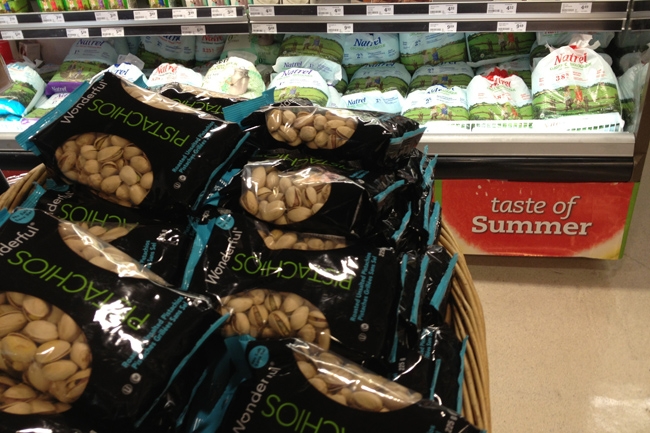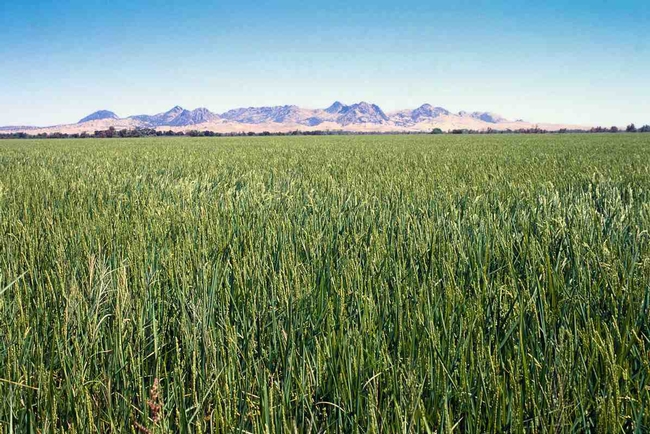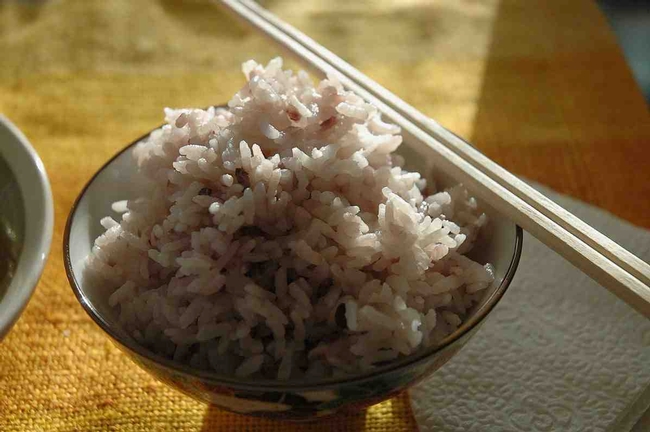Posts Tagged: exports
By the bagful: pistachios and milk
While visiting my brother in Toronto this summer, we stopped by a grocery store and I was struck by two things: pistachios and milk in bags.
Stacked high in the back corner were bags of California pistachios – a reminder of how prominent a producer the Golden State is and a sign of the marketing power of its largest pistachio processor, Paramount Farms. The United States is the world’s leading pistachio producer, and 99 percent of the country’s crop comes from California.
Pistachios are California’s third-biggest nut crop, behind almonds and walnuts, and the state’s sixth-leading agricultural export, with markets spanning from Canada to China.
To help continue to improve production, the pistachio industry is turning to the University of California. In January, the California Pistachio Research Board announced it will donate $1.5 million to support a UC Cooperative Extension specialist to conduct nut and fruit disease research. This specialist position will help UC Agriculture and Natural Resources fulfill its mission as well as serve the pistachio industry’s needs.
UC research plays a key role in keeping California the nation’s leading agricultural state. Partnerships such as the one with the Pistachio Research Board – and previous ones with the California Rice Research Board and California Table Grape Commission – represent a new funding model to extend that role.
On the dairy side, California is known for happy cows; eastern Canada is known for bagged milk. Yes, milk is sold in bags of three, each 1.33 liters. My sister-in-law likes the bags because the packaging is more environmentally friendly than plastic jugs. You even can purchase specially designed pitchers for dispensing bagged milk. The key is cutting the tip of the bag properly, so it can pour smoothly – not too slow and not too fast. It’s an interesting concept, but a little messy. Will milk bags catch on in California? I think that will be a tough nut to crack.
Transgenic rice? Not any time soon
Although 10 years have passed since the first regulatory approval of genetically engineered, herbicide-tolerant rice, no transgenic rice is grown commercially, either in California or nationwide.
In contrast, genetically modified crops such as soy, corn and cotton have received widespread adoption by U.S. farmers.
Debate continues over whether genetically modified rice would be a plus or minus for the environment. While herbicide-tolerant varieties could reduce herbicide applications overall — they could also contribute to herbicide resistance in weedy rice.
For the time being, however, market considerations have trumped the debate over environmental costs and benefits.
A recent article in California Agriculture featured a literature review and extensive interviews with California rice growers explaining why.
“Although several studies suggest that transgenic rice would benefit California rice growers — particularly the herbicide-tolerant varieties — transgenic rice also presents economic risks,” writes Dustin Mulvaney, lead author, and now assistant professor at San Jose State University.
For one, California growers rely on exports for half of their sales. At present, Japan alone constitutes 41 percent of the state’s export market. Japan purchased more than $421 million in 2009 — over 40 percent of the industry's exports.
Japan has suggested that if tests on imports reveal transgenic traits, it would deny rice shipments. Other international customers such as Taiwan, Turkey and South Korea have followed suit. Both Taiwan and South Korea have asserted strict import restrictions on transgenic rice. Turkey banned transgenic rice altogether.
“While it is difficult to determine whether protectionism, culture or biosafety are the main forces driving such policies, all play a role in discouraging the deployment of transgenic rice,” Mulvaney said
California growers manage risks to marketability through the California Rice Certification Act. The act targets “characteristics of commercial impact,” including those of transgenic rice. The act states that growers rely upon identity preservation in the “production, handling and marketing practices that maintain the integrity and purity of agricultural commodities.”
Identity preservation is used to manage “genetic pollution” risks from transgenic crops (California Agriculture July-September 2006), particularly those not approved for human consumption or used to make pharmaceuticals (California Agriculture April-June 2007). In these latter cases, identity preservation must be 100% effective.
Mulvaney notes, “The commercial approval of transgenic rice in California is unlikely until there is widespread market acceptance and growers are assured of no sales interruptions. “
California strawberries triumph in Beijing
The New York Times reported that China's ban on California strawberries has been lifted during the Olympics at the request of athletes who know what's good for them.
Chinese farmers produce strawberries for just two months of the year; California offers them year-round. This week the state sent 450 pounds of berries, the first of 35 or so shipments, officials said, according to the Times article.
In the brief story, writer Jennifer Steinhauer apparently didn't have the space to mention the key role University of California scientists have had in developing California's robust strawberry industry. About 80 percent of the strawberry varieties grown on 30,000 acres in California, stretching from San Diego County to San Mateo County, were developed by University of California breeders. For more on the UC connection with California strawberries, see this UC Delivers article.

California strawberries



